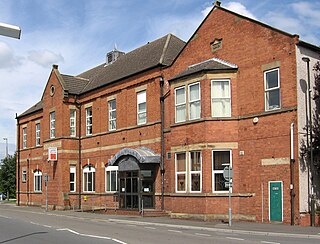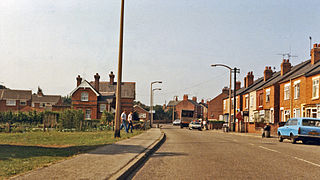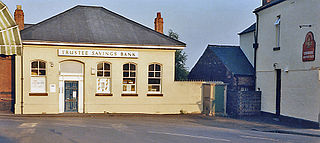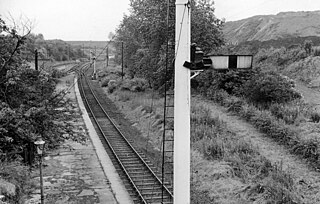
Staveley is a town and civil parish in the Borough of Chesterfield, Derbyshire, England. Located along the banks of the River Rother. It is northeast of Chesterfield, west of Clowne, northwest of Bolsover, southwest of Worksop and southeast of Sheffield.

Clowne is a village and civil parish in the Bolsover district of Derbyshire, England. The population at the 2001 Census was 7,447 increasing to 7,590 at the 2011 Census. It forms part of the Bolsover constituency. Clowne lies 9 miles (14 km) north east of Chesterfield and 7 miles (11 km) south west of Worksop. It is mentioned in the Domesday Book as Clune. The name is derived from the Celtic Clun for a river.

Creswell railway station serves the village Creswell in Derbyshire, England. The station is on the Robin Hood Line between Nottingham and Worksop. It is also the nearest station to the larger village of Clowne.

Shirebrook railway station serves the town of Shirebrook in Derbyshire, England. The station is on the Robin Hood Line, 21½ miles (35 km) north of Nottingham towards Worksop.
Whittington railway station is a former railway station on the southern edge of New Whittington, Derbyshire, England.

Barrow Hill railway station is a former railway station in the village of Barrow Hill in northern Derbyshire, England.
The Lancashire, Derbyshire and East Coast Railway (LD&ECR) was built to connect coalfields in Derbyshire and Nottinghamshire with Warrington and a new port on the Lincolnshire coast. It was a huge undertaking, and the company was unable to raise the money to build its line. With the financial help of the Great Eastern Railway it managed to open between Chesterfield and Lincoln with a branch towards Sheffield from 1896. Despite efforts to promote tourist travel, the passenger business was never buoyant, but collieries were connected to the line, at first and in succeeding years. The Great Eastern Railway, and other main line companies, transported coal to the southern counties, and the company's engines took coal to Immingham in great quantities. The company had a fleet of tank engines.

Arkwright Town railway station was in Arkwright Town, Derbyshire, England.

Shirebrook North railway station was a railway station serving the town of Shirebrook in Derbyshire, England. It was on the Lancashire, Derbyshire and East Coast Railway running from Chesterfield to Lincoln. The starion was also on the former Shirebrook North to Nottingham Victoria Line and the Sheffield District Railway. The station has since been demolished and housing now occupies parts of the site with some stub rails nearby serving a train scrapper.

Creswell and Welbeck railway station used to serve the village of Creswell, in north eastern Derbyshire, England.

Clowne South railway station is a former railway station in Clowne, Derbyshire, England.

Staveley Town is a disused railway station in Staveley, Derbyshire in England.

Clowne & Barlborough is a former railway station in Clowne northeast of Chesterfield, Derbyshire, England.

Bolsover Castle is a former railway station in Bolsover, Derbyshire, England.

Palterton and Sutton is a former railway station between Palterton and Sutton Scarsdale, Derbyshire, England.

Glapwell is a former railway station in Glapwell, Derbyshire, England.

Rowthorn and Hardwick is a former railway station in Rowthorn, near Glapwell, Derbyshire, England.
Markland Grips Viaduct is a former railway viaduct south east of Clowne, Derbyshire, England.
The Doe Lea branch is a mothballed railway line in Derbyshire, England. It connected the Derbyshire towns of Chesterfield, Staveley and Bolsover to the Nottinghamshire town of Mansfield. It also had a branch line to Creswell via the Derbyshire town of Clowne.
Beighton Junction is a set of railway junctions near Beighton on the border between Derbyshire and South Yorkshire, England.














